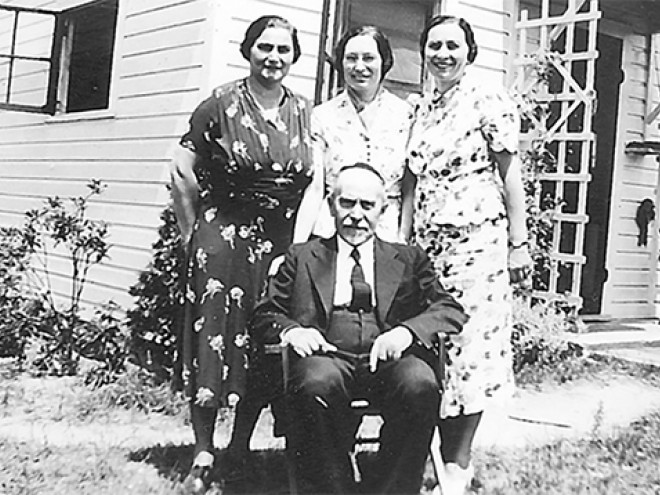Earlier this week, Rae and Noah Bernamoff wrote about some of their upcoming events and how they went from slinging smoked meat to writing a cookbook. They have been blogging here all week for Jewish Book Council and MyJewishLearning.
 Salmon is the quintessential Jewish fish — if you go to Russ and Daughters in New York City, there are a dozen different kinds for sale, cured and smoked, from all different parts of the world. The great thing about salmon is that it’s so forgiving. Any beginner cook knows this; even if you leave it under the broiler too long, it still comes out moist because of all that luscious fat. That fattiness is what makes salmon such a good choice for home-curing, too. It just won’t dry out.
Salmon is the quintessential Jewish fish — if you go to Russ and Daughters in New York City, there are a dozen different kinds for sale, cured and smoked, from all different parts of the world. The great thing about salmon is that it’s so forgiving. Any beginner cook knows this; even if you leave it under the broiler too long, it still comes out moist because of all that luscious fat. That fattiness is what makes salmon such a good choice for home-curing, too. It just won’t dry out.
Some varieties of salmon are fattier than others; we use king salmon for making lox at the deli, and always the farmed variety, not wild. That’s because wild salmon — especially if it’s caught during “running” — tends to be too lean for curing. Too little fat will cause the salt mixture to “burn” the surface of the salmon and stop the cure from penetrating. This recipe is a case where you really want to be selective about where you buy your fish, and where it came from. This is a pretty light cure, meaning the qualities of the fresh fish really come through in the finished product. So you want top quality salmon.
Allow the fillet to rest a day after rinsing off the curing mixture, sort of like you would with a fine steak after taking it off the grill (only longer). Resting allows the fish to continue “cooking” — that is, it lets the curing compounds distribute themselves evenly throughout the salmon after they’ve penetrated the flesh. Also note that using good kosher salt (we recommend Diamond Crystal) is absolutely essential.
At Mile End we use our house-made lox for two of our signature breakfast dishes, the Beauty and the Mish-Mash, but it’s great for lunch sandwiches, finger foods and all sorts of other preparations. One of my favorite simple pleasures is a thickly cut slice of challah (recipe posted yesterday) schmeared with cream cheese and topped with a layer of lox.
Recipe: Lox
1/3 cup whole black peppercorns
2/3 cup sugar
1 cup Diamond Crystal kosher salt
1 bunch of dill
1 2‑pound boneless king salmon fillet, with skin
Combine the peppercorns, sugar, and salt in a bowl and stir to combine. Place 2 or 3 sprigs of the dill in the bottom of a nonreactive baking dish, and sprinkle about ¼ cup of the salt mixture evenly over the bottom of the dish.
Make 2 or 3 shallow cuts in the skin of the salmon fillet. Place the salmon, skin side down, on top of the salt and dill, and place a few more sprigs of dill on top of the salmon. Sprinkle the salmon all over with another ¼ cup of the salt mixture. Reserve the remaining salt mixture. Loosely cover the baking dish with plastic wrap and refrigerate it overnight.
Carefully pour off any liquid that has accumulated in the baking dish. Add another ¼ cup of the salt mixture to the bottom of the dish, and sprinkle ¼ cup more over the salmon. Replace the dill sprigs with new ones if they’ve wilted. Cover the dish and refrigerate overnight.
Repeat this process 2 more times over 2 more days.
On the fifth day, remove the salmon, rinse it thoroughly, and pat it dry with paper towels. Place the salmon on a small drying rack set inside a clean baking dish or over a couple of layers of paper towels. Refrigerate, uncovered, overnight.
To serve, slice very thinly and carefully at a shallow angle, working from the front of the fillet toward the tail.
Makes about 1½ pounds
Visit Noah and Rae Bernamoff’s official website here.



